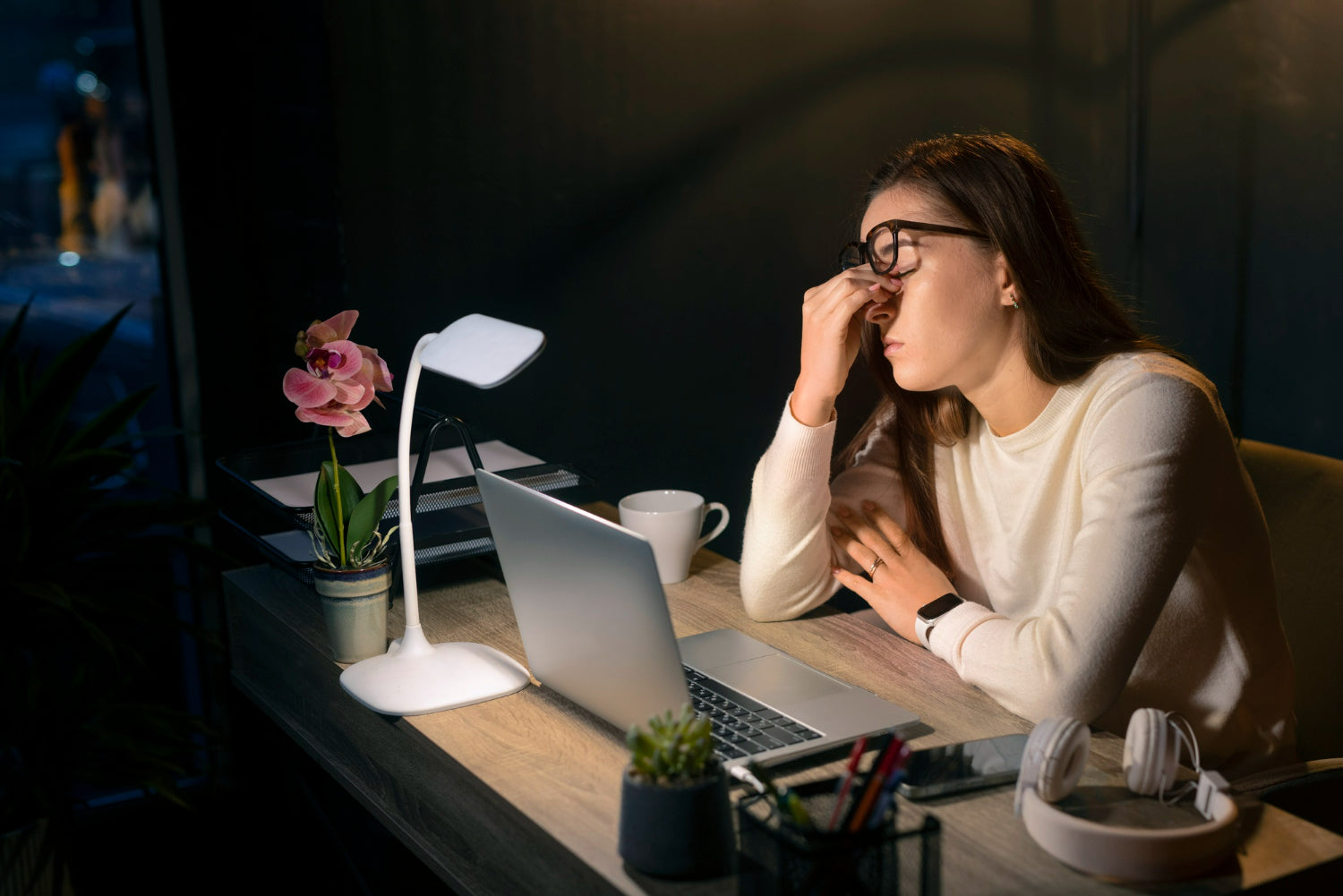In today's digital age, prolonged screen time has become a norm for many professionals, students, and even casual users. However, spending extended hours staring at a computer, tablet, or smartphone screen can lead to significant eye strain. Symptoms of eye strain include headaches, blurred vision, dry eyes, and neck and shoulder pain. Fortunately, there are several strategies you can employ to mitigate the effects of prolonged screen time and protect your eye health.
1. Follow the 20-20-20 Rule
The 20-20-20 rule is a simple and effective method to reduce eye strain. Every 20 minutes, take a 20-second break and look at something 20 feet away. This practice helps relax the eye muscles and reduces fatigue caused by continuous focusing on a screen.
2. Adjust Your Screen Settings
Brightness and Contrast
Ensure that your screen's brightness is similar to your surrounding environment. Too bright or too dim screens can strain your eyes. Adjust the contrast to a level where it’s comfortable to read text without causing strain.
Text Size
Increase the text size on your devices to avoid squinting. Larger text can reduce the effort your eyes need to read and can prevent strain.
Blue Light Filters
Many devices have blue light filter settings or "night mode" options that reduce the amount of blue light emitted by screens. Blue light can disrupt sleep patterns and contribute to eye strain, so using these filters can be beneficial, especially in the evening.
3. Position Your Screen Correctly
Distance and Height
Position your screen about an arm's length away from your eyes and ensure the top of the screen is at or just below eye level. This setup allows you to look slightly downward at the screen, which is a more natural position for your eyes.
Reduce Glare
Glare from windows or overhead lighting can cause eye strain. Use an anti-glare screen protector, adjust your lighting, or reposition your monitor to minimize glare. Also, consider using blinds or curtains to control natural light in your workspace.
4. Blink More Often
Staring at screens can reduce your blink rate, leading to dry eyes. Make a conscious effort to blink more frequently to keep your eyes moist and reduce discomfort. You can also use artificial tears to alleviate dryness.
5. Take Regular Breaks
Frequent breaks are essential to give your eyes a rest. Stand up, stretch, and walk around for a few minutes every hour. This practice not only benefits your eyes but also improves your overall physical health and productivity.
6. Maintain a Comfortable Workspace
Ergonomics
An ergonomic workspace setup can reduce overall physical strain, including eye strain. Ensure your chair, desk, and screen are arranged to promote good posture and comfort.
Lighting
Proper lighting can significantly impact eye comfort. Use adjustable desk lamps to provide adequate illumination without causing glare. Avoid working in dark rooms with only the screen as a light source.
Conclusion
Eye strain from prolonged screen time is a common issue that can be managed with a few simple adjustments and habits. By following the 20-20-20 rule, adjusting your screen settings, positioning your screen correctly, blinking more often, taking regular breaks, and maintaining a comfortable workspace, you can protect your eyes and reduce strain.
For a well-organized and ergonomic workspace that supports your efforts to reduce eye strain, consider Moog Desk Sets. Our desk sets are designed to keep your workspace tidy and functional, helping you create an environment conducive to both productivity and comfort. Invest in Moog Desk Sets today and experience the difference in your work environment.

